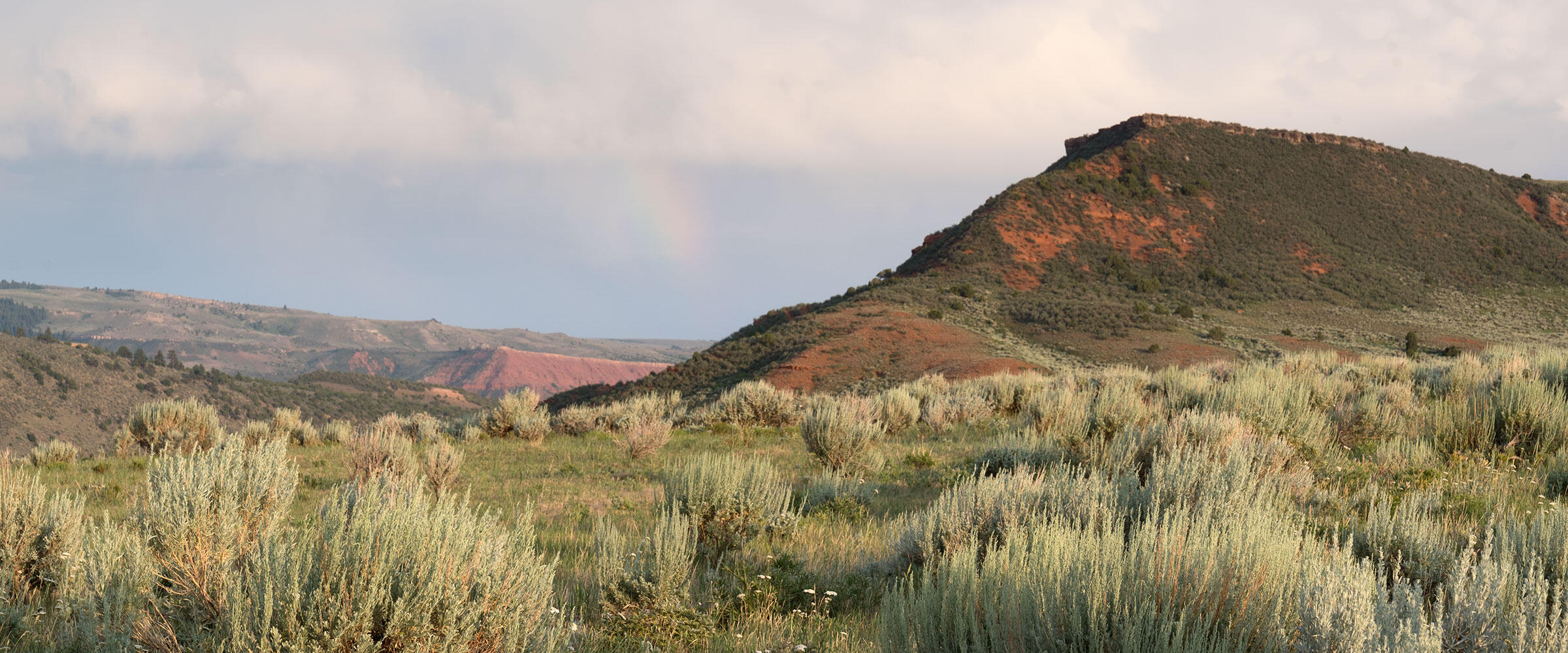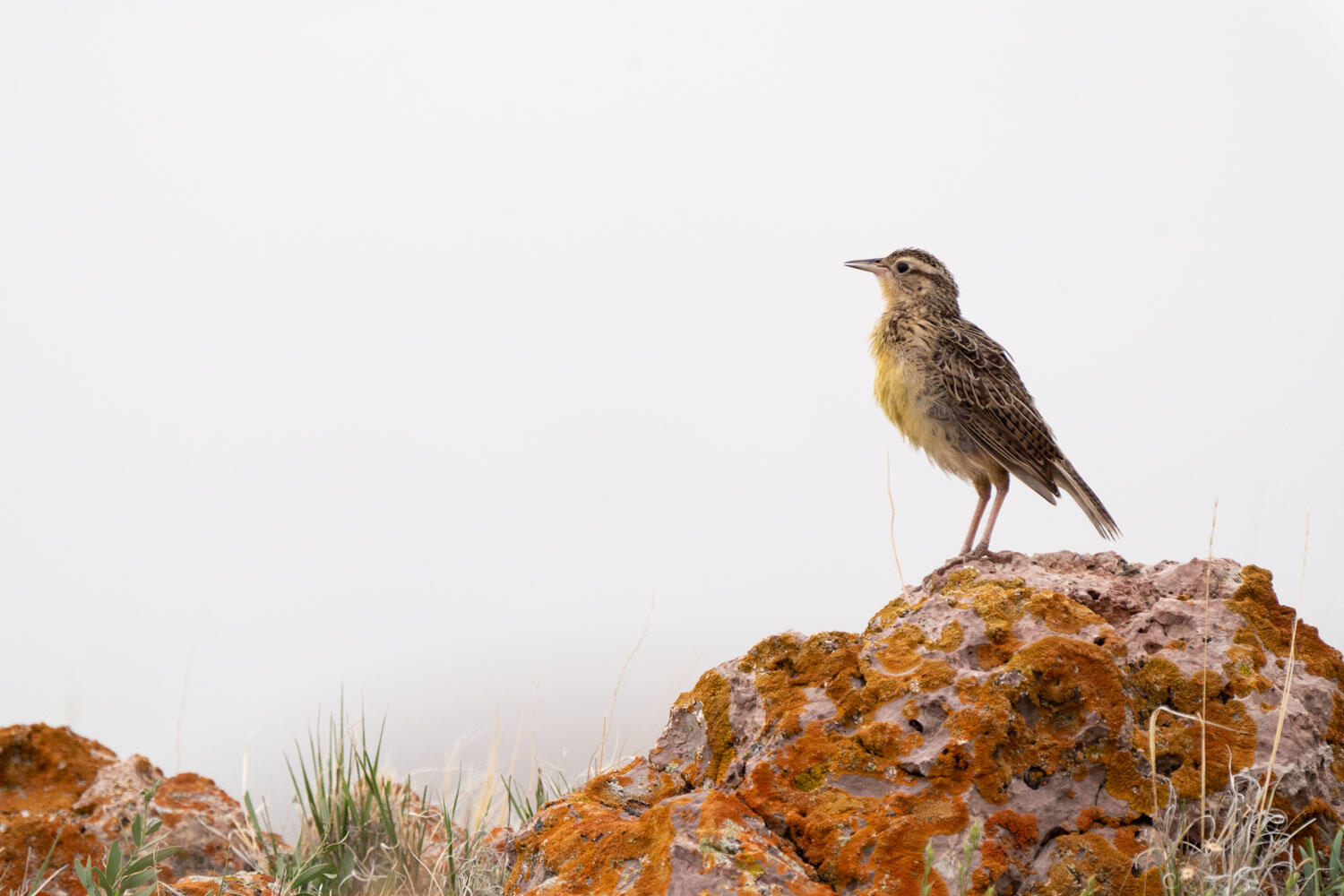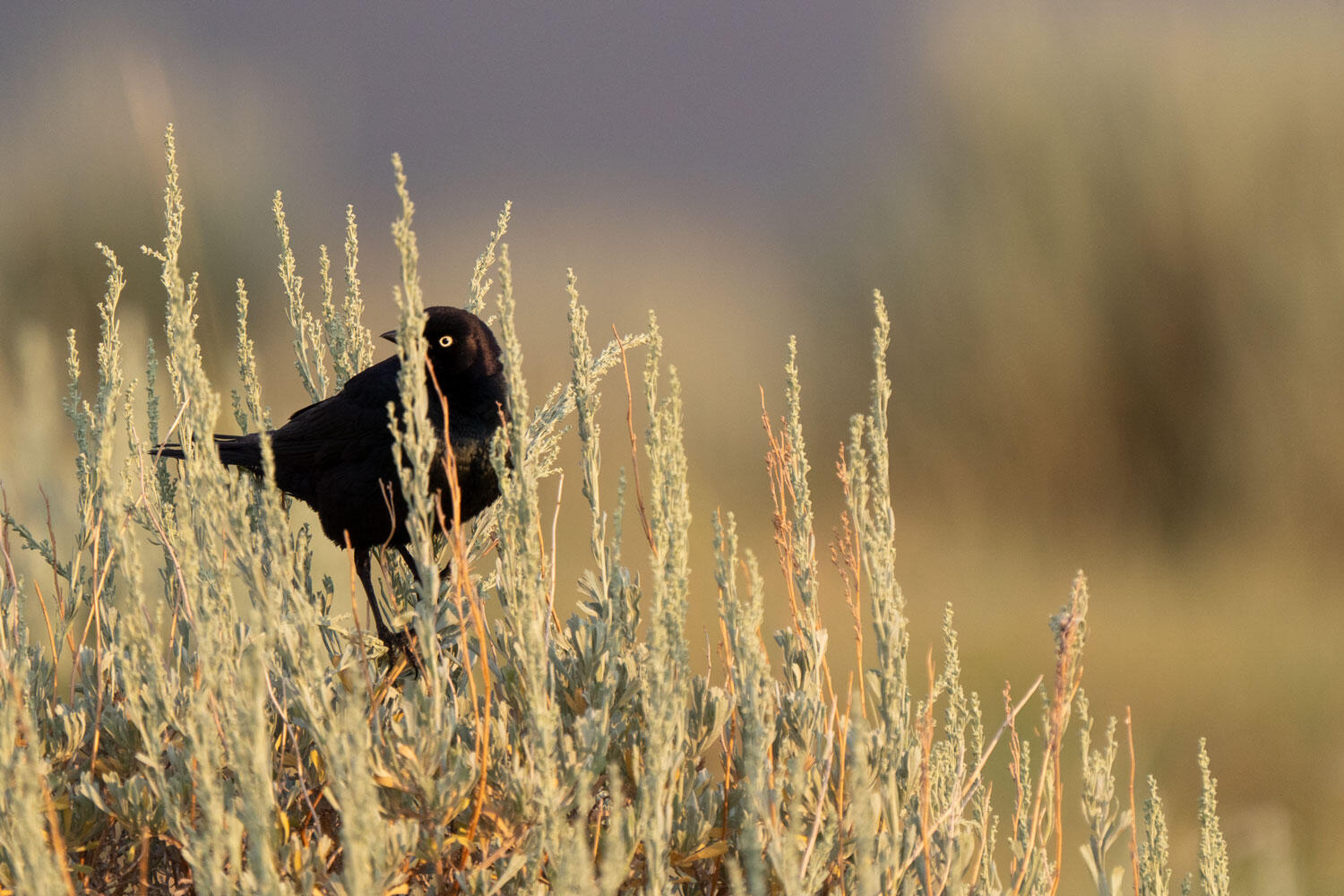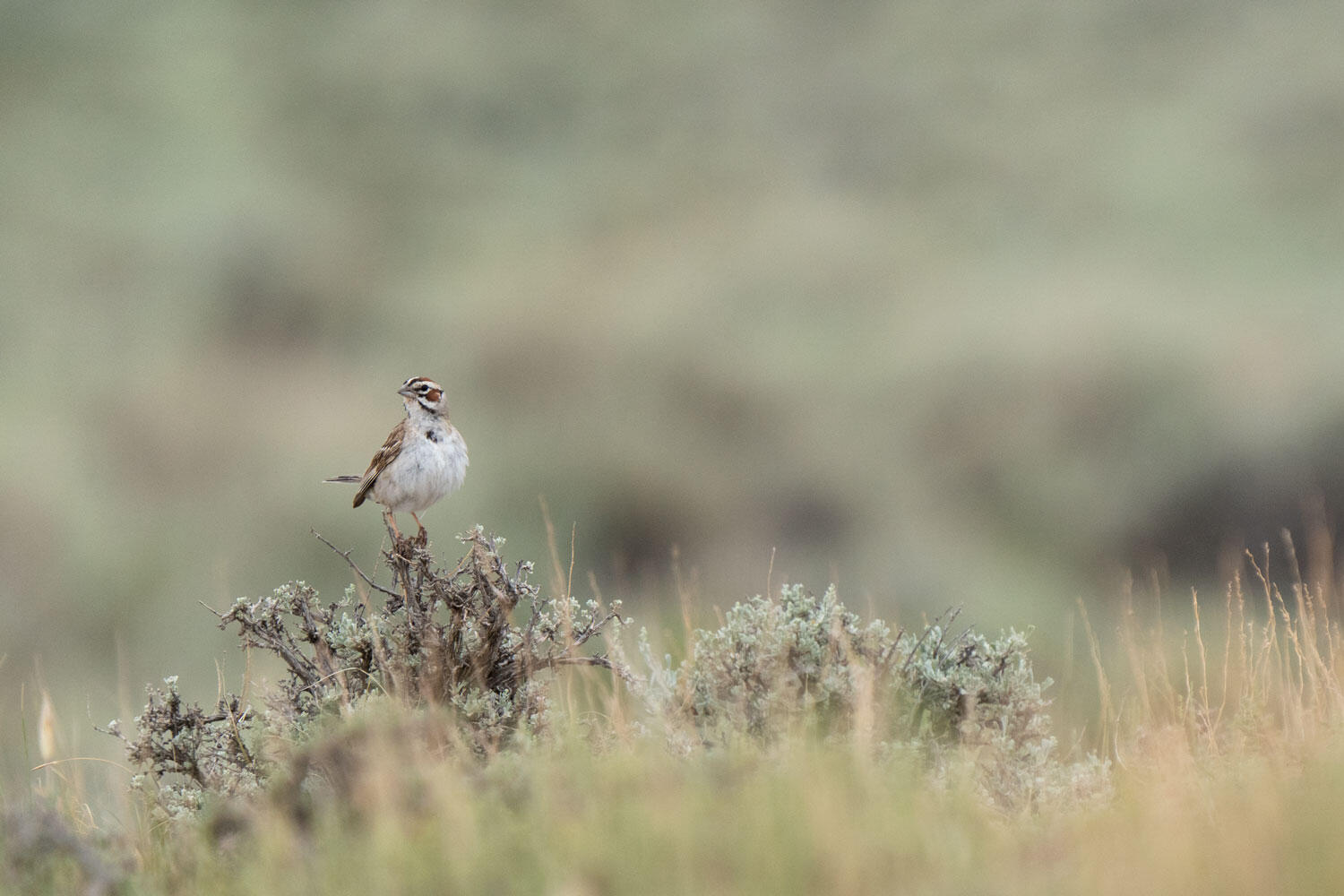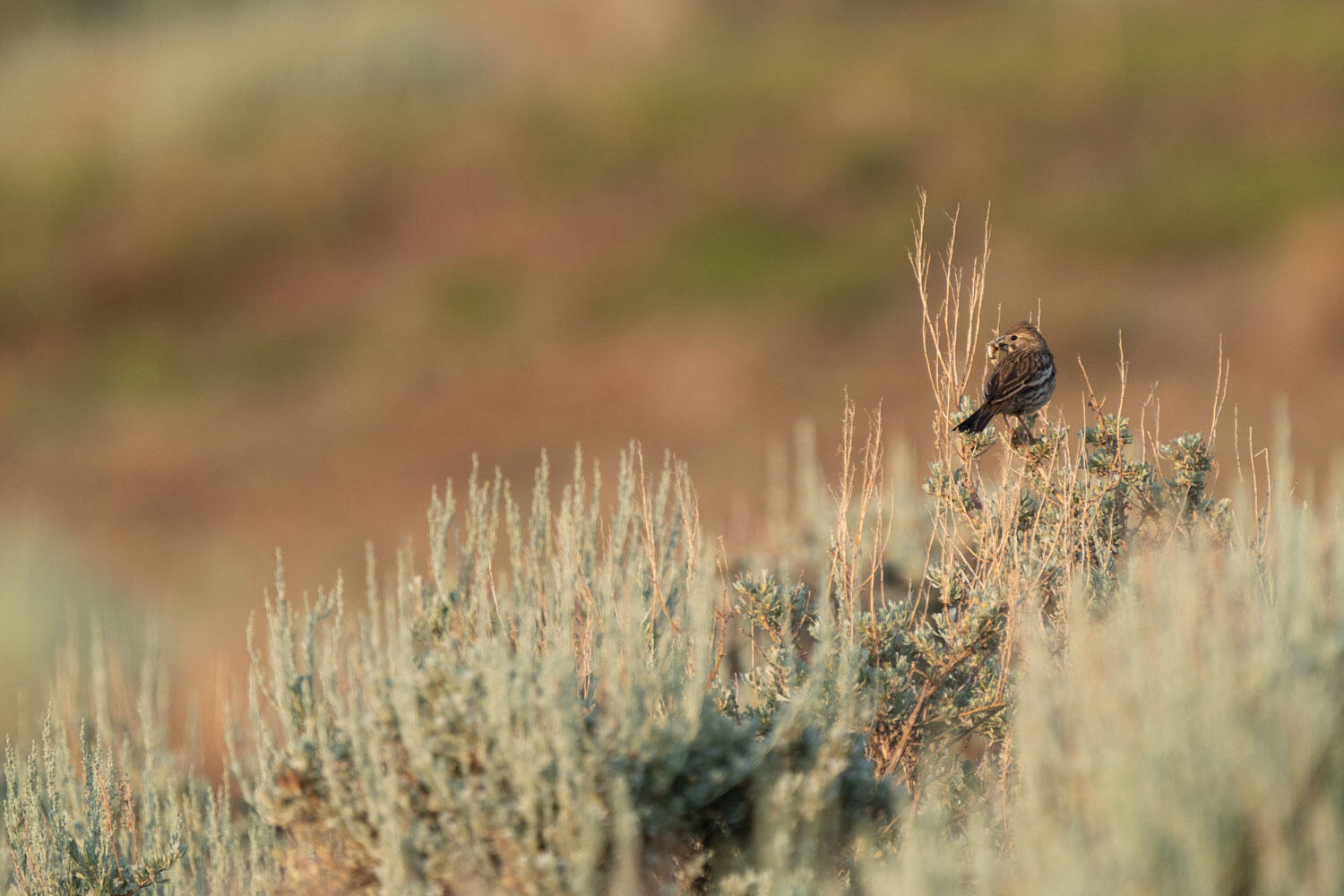Tucked in hills speckled with sagebrush, juniper, and ponderosa is a serene and beautiful place. High on this Audubon-certified ranch south of Casper, Wyoming, Vesper Sparrows, and Lark Buntings sing from the vibrant sagebrush. Below this meadow, the songs of Lazuli Buntings and Yellow-breasted Chats bounce off the canyon walls, where Prairie Falcons nest. Down in the lowlands, Sage Thrashers, Brewer’s Sparrows, Lark Sparrows, and Greater Sage-Grouse nest in the sagebrush steppe.
All this and more makes up the 23,433-acre Eagle Ridge Ranch, owned and managed by Stacey Scott and his family. Scott inherited not only the ranch from his father but also his love for birdwatching. “I have a pair of [binoculars] in the ranch truck. Whenever I see or hear something I don’t expect, I stop and look at it. You just never know what you’re gonna see,” says Scott as he drives me through his ranch.
Scott knows that birds are an indicator of the health of his ranch, and this year they’re signaling trouble. Birds that used to be abundant are all but absent. Songs that were common are silent. Brewer’s and Vesper sparrows are the scarcest he’s seen them in 20 years.
An intensely dry fall and spring combined with unusual weather events have taken a toll on birds in the area, along with cattle and ranchers. In the arid West, everything depends on water. When there’s not enough, it’s hard for cattle to find enough forage and water to survive. The year before, Scott had to sell off his cows because not enough grass grew to feed them. After building the genetics of his herd for 60 years, that was not an easy decision.
When ranchers face a drought like this, they’re forced to choose between their cattle and their land. If they continue to graze at normal rates, their profits may suffer less, but the land will take a hit. Good ranchers know that if you abuse the land, you undercut your whole operation, and Scott is one of them. As we walk through a pasture where even the sagebrush looked dry, I ask him how he’s adapting his grazing to the drought. “This year, grazing it right probably means not grazing at all.”
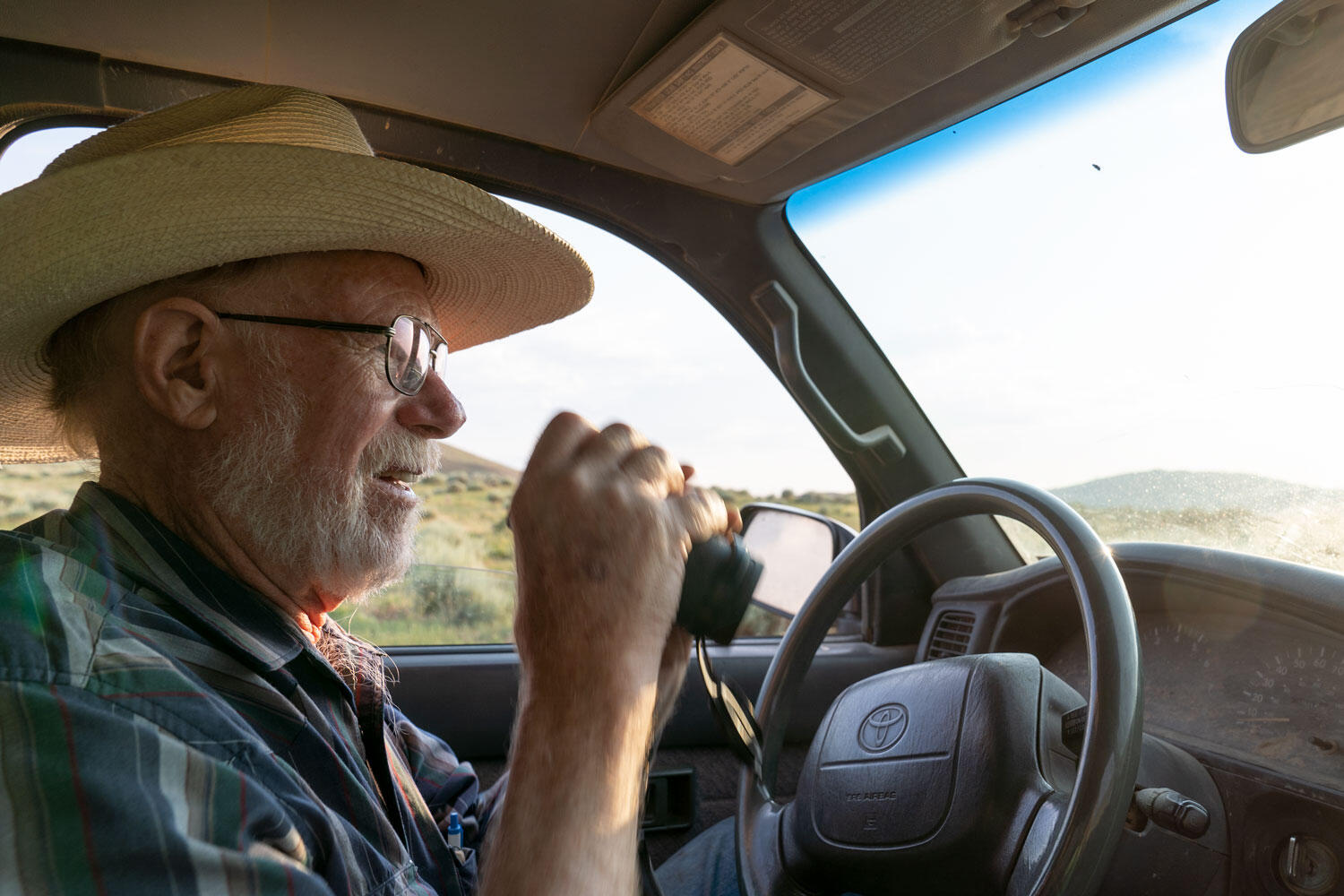
The Scotts have already reduced their herd significantly. We drive for an hour without seeing any cattle. In limiting their numbers during this dry year, the Scotts are reducing the pressure on the land. But when your livelihood depends on cattle, you still have to figure out a way to graze sustainably.
One strategy conservation-minded ranchers employ is moving their cattle from pasture to pasture between months or seasons. In this system, called rotational grazing, all pastures receive grazing at some point, which is crucial for maintaining healthy rangelands that evolved with grazers. However, the plants in each pasture also receive sufficient time to rest when the cattle are rotated to another pasture. The result is a mosaic of habitats that sustains a diversity of wildlife, as well as cattle.
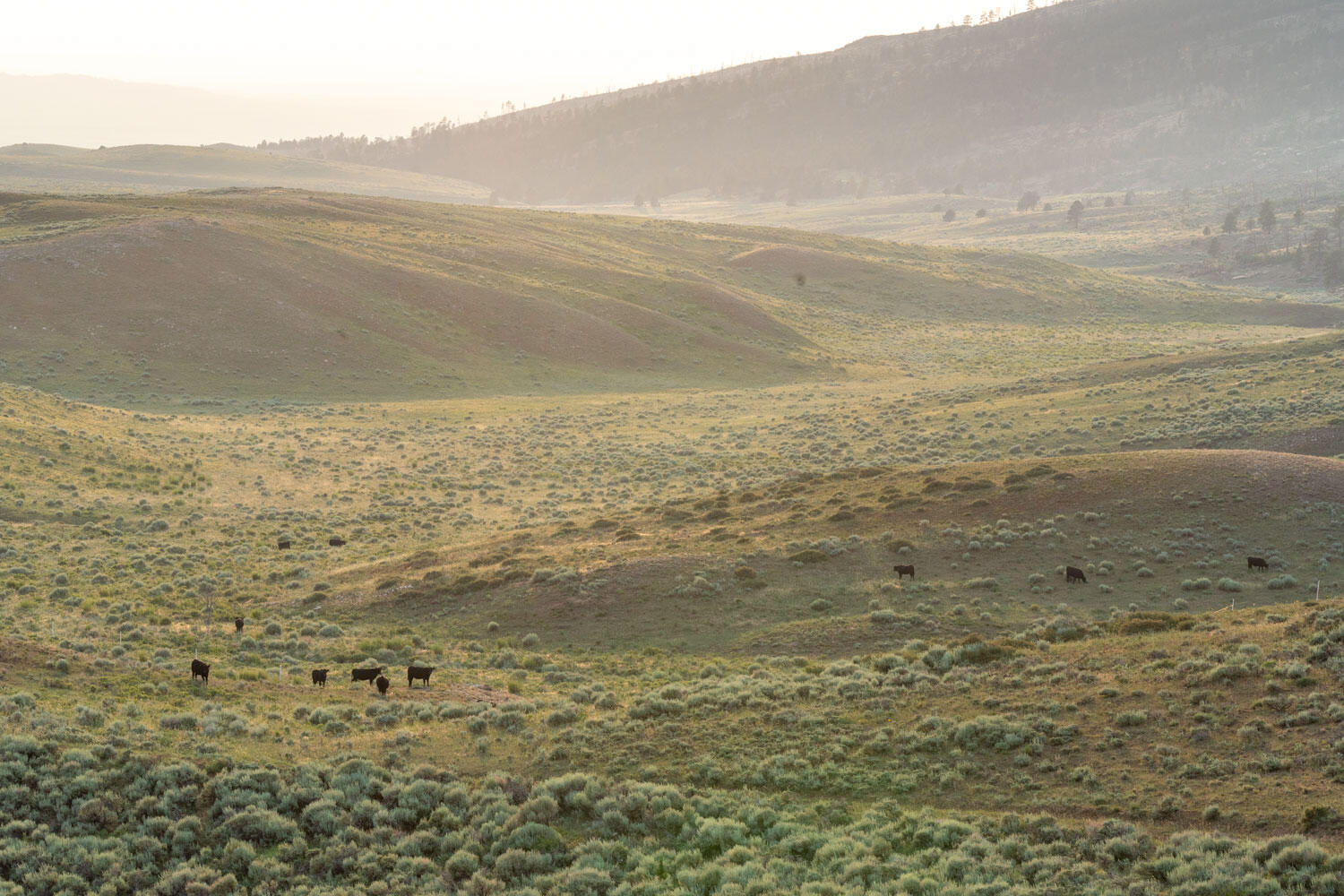
But once again, it all depends on water. Each cow/calf pair on Eagle Ridge Ranch needs to drink at least 20 gallons a day during the summer (although Scott thinks that climate change has increased that number). Because the ranch only receives about 12-16 inches of rain in good years, the streams don’t have enough water to sustain the herd. That means the Scotts have to install stock tanks in each pasture that they want cattle to graze. In a dry year like this, good grazing means rotating cattle through many pastures so they don’t overgraze the parched vegetation. That requires a lot of stock tanks, piping, and water.
My tour of Eagle Ridge Ranch culminates with a visit to some of Scott’s stock tanks in a picturesque meadow. A thunderstorm has just passed, cattle are grazing nearby, and Vesper Sparrows have begun singing as the air cools. At first glance, the tanks are nothing to marvel at: just some corrugated metal and old tractor tires holding water in place. But it took three to four people a full week to install just one tank. Scott points to the bottom of the canyon that we drove up and explains that they had to install 3,000 feet of pipe from the creek 700 feet below. To install the water infrastructure needed to graze the rest of this area well, he estimates it would cost well over $50,000. He puts it simply for me, “Grazing requires water to do it right.”
As the sun sets, I’m truly impressed by the beauty of the scene, the health of the vegetation, and the chorus of birds. So I’m surprised when Scott says, “We’re not doing as good a job as I’d like to be, but we’re still doing a pretty good job.” Scott cares deeply about the health of this land, so it pains him to not be able to rotate his cattle as much as he should. In dry years like this, they graze the vegetation harder than he’d like. His rancher eyes can see things here that mine don’t, but I’m glad that his are watching over this ranch.
If you want to support the Scotts and other U.S. ranchers who are committed to the hard work that conservation ranching requires, please buy meat from Audubon-certified ranches.

